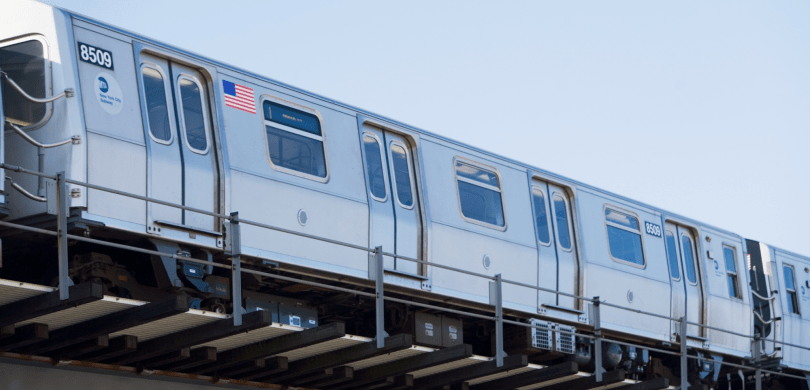Metropolitan Transportation Authority


Highlights
The MTA set out to improve the efficiency of its customer experience, and to create a cohesive user journey across all touchpoints and channels. To provide every commuter with the right experience, on the right device, at the right time, the MTA needed to extend the information accessed on mta.info into train stations and platforms.
The central challenge was to successfully process real time train data from the largest public transit system in the world, and to display content rapidly enough so that it was relevant to passengers.
Acquia Cloud Platform, Decoupled Drupal CMS, Acquia Professional Services
With Drupal, the MTA can now use the same content management system (CMS) that powers its website to push content and data to 1,800 digital signs in more than 400 stations in New York City. Most importantly, by infusing the power of digital signage into station countdown clocks, the MTA is making its customers the priority.
The Client
The Metropolitan Transportation Authority (MTA) is the largest public transit authority in the United States. Every day, the MTA provides transportation throughout the New York metropolitan area to more than 11 million passengers. These commuters rely on www.mta.info to remain up-to-date on everything from daily traffic to emergency and severe weather events. Today, the MTA is using the same content management system (CMS) that powers its website to push content and data to digital signs in more than 400 stations in New York City.
Digital signage ushers in the next generation of digital experiences, and extends an organization's reach beyond the conventional browser. Screens and signage are everywhere; in public infrastructure, retail, public transit, highways, government building, hospitals, and institutions of higher education. Coupling digital screens with the cutting edge capabilities of Drupal reinvigorates the overlooked medium, and makes the endpoints of content and information distribution limitless.
The Challenge
The MTA set out to improve the efficiency of its customer experience, and to create a cohesive user journey across all touchpoints and channels. To provide every commuter with the right experience, on the right device, at the right time, the MTA needed to extend the information accessed on mta.info into train stations and platforms. This required the ability to push screen-based information, news, and alerts in real time to the thousand of countdown clocks that are installed across the lettered lines. The central challenge was to successfully process real time train data from the largest public transit system in the world, and display content rapidly enough so that it was relevant to passengers.
Digital signage architectures can pose other challenges, ranging from security, to fault recovery, content modeling, scalability, and expensive proprietary solutions.
Security: Digital signs can be vulnerable when it comes to security, and embedded devices have a history of poor security records. In addition to monitoring a secure CMS, organizations must ensure that digital signage hardware can also withstand attempted security breaches.
Fault Recovery: In some scenarios, the success of digital signage is dependent on the ability to push real-time messages and updates. In order to maintain strong performance, consistent internet connectivity and flexible fault recovery is key.
Content Modeling: Signs and devices come in a variety of sizes and orientations. However, data must be sent to devices of all sizes in a uniform manner. The ability to effectively parse and cache data across numerous devices can require high technical expertise.
Scalability: One of the largest challenges when developing digital signage architecture is scalability. The task of delivering real time messages to thousands of signs can be taxing when managed on an internally hosted infrastructure.
Expensive Proprietary Solutions: Proprietary software solutions for digital signage have expensive licensing fees, restrictive vendor lock in, and require manual installation. Legacy technologies make it difficult to deploy content not just to one screen, but perhaps thousands at one time.
The Solution
By leveraging Drupal on the Acquia Cloud Platform, the MTA can use digital signs, networked across many locations and powered by centrally managed content, to deliver a well-rounded customer experience. This required the ability to pull data from external feeds, push data to Amazon IoT Services and display the data in real time on the countdown clocks. In partnership with Acquia Professional Services and digital agency, CivicActions, the MTA built a unified end-to-end experience for all 11 million of its customers.
Pulling Data from External Feeds
To supply the countdown clocks with data, the MTA can create content inside of Drupal, in addition to pulling data from external feeds. Drupal is equipped with provider APIs, which can pull data from transit information, weather, and message feeds. Each of these data types comes from one or more sources, and each has different data formats, granularity, and update intervals.
For example, the MTA recently outfitted trains with bluetooth beacons to improve the accuracy of predicted arrival and departure times. Drupal can pull data from these bluetooth beacons to inform the train arrival times displayed on each platform countdown clock. Drupal acts as the gatekeeper for all data, enabling the MTA to send data to signs from multiple API in real time.
Pushing Data to Amazon IOT Services
The MTA required the ability to automate the distribution and management of transit messages, which must be tailored for each distinct platform or station. This is challenging because the data required to power the digital signage architecture requires context. For example, a countdown clock at Columbus Circle does not need to inform passengers about train arriving on the other side of town. Drupal content modeling solves for this challenge by providing the context for how data should be consumed and handled.
For the MTA, the content model is representative of the physical attributes of the transit system. Routes, stations, platforms, tracks, and lines are represented in the model as Drupal content types. These content types can inform the parsing and caching of data across numerous devices, such as countdown clocks.
User experience is also a major component of this feature, as Drupal allows non-technical users to log into the administration site, and make changes to the content model on the fly. The content model also allows teams at MTA to utilize any content that is created inside Drupal. As messages are created within Drupal, they can be targeted at various granularities (e.g. displayed across an entire Route or only on a single Platform).
Once data is given context through the Drupal Content Model, it needs to be pushed to the digital signs. To do this, the MTA implemented a data pipeline that utilizes an IOT service from AWS. This IOT powered websocket provides near instantaneous delivery of data across the city, and allows the devices to receive highly granular updates to the on-screen data.
Displaying Data in React
Finally, digital signage is also a great use case for what can be accomplished with decoupled Drupal. A decoupled architecture allows developers to utilize any technology to render the front-end experience (“the glass” where a user interacts with an application) in lieu of the theming and presentation layers that come with a coupled CMS out-of-the-box. Simply put, this means that the front end does not operate like a traditional website, and data can continue to flow into the display without navigating away from or reloading the page.
Decoupled Drupal is ideal for the MTA’s use case because every sign must react quickly in order to display updated information before the next iteration of data arrives. The countdown clock needs to respond rapidly enough to inform passengers when a train is two minutes away...one minute away...and arriving. This requires a flexible front end, which will enable the data pipeline to constantly delivering data to the IOT service.
The MTA built the front-end experience using React.js, which is a JavaScript MVC framework. By adopting an approach called “progressively decoupled Drupal”, the MTA was able to build the React application within a Drupal theme. This means that data displayed in the front end can still be informed by the Drupal content model, while maintaining the flexibility of a decoupled solution.
As data flows, React handles all necessary on-screen presentation, and uses the data received to inform the display on the countdown clock. This allows for the screen to be largely independent of Drupal and the web server, instead relying on the persistent websocket connection into the IOT for data. This means that signs have the ability to display relevant data quickly, and commuters remain up-to-date on incoming trains.
The Results
Streamlining Content Management
In partnership with Acquia and CivicAction, the MTA can now leverage Drupal to deliver content to its flagship site, signs, and numerous other presentation devices. Not only does this offer a consistent editing experience for content teams, but the ability to re-purpose data between devices streamlines content management. To date, the MTA can push content and data to 1,800 digital signs in more than 400 stations in New York City.
Using Drupal as the brain behind the MTA’s digital systems guarantees that content updates will be uniform across all platforms. By integrating resources across all touchpoints, the MTA can guarantee efficiency and establish an intuitive customer journey. Memorable and engaging experiences will not only increase customer satisfaction, but will enhance the value of a brand’s goods and services.
The Power of Open Source
By leveraging the power of open source, the MTA is able to display critical data to customers and commuters in a cost effective manner. Adopting an open source solution provides the MTA a flexible web-publishing approach to what has been a more complex and costly legacy market.
Using Drupal to Manage Signs
Drupal also provides a powerful content management system that allows any individual, regardless of technical expertise, to create, manage and publish digital content and experiences. With Drupal, the MTA can manage digital signage using the same CMS utilized to publish content to www.mta.info. The ability for non-technical teams to actively manage the display of content on a sign is a revolutionary capability, and features such as access controls and permission, WYSIWYG, and content workflow allow any team to control their digital signage with ease.
Making the Customer the Priority
Most importantly, by infusing the power of digital signage into station countdown clocks, the MTA is making its customers the priority. Transit information, news and alerts are now readily accessible to keep passengers better informed throughout their commute. The MTA is setting the precedent for how organizations can implement digital signage to streamline communication, improve information flow, and modernize the transportation industry. In addition to the countdown clocks, the MTA has also equipped every subway station with WiFi and cellular service. By putting digital at the center of its business, the MTA is improving the experience of its customers to inform, direct and drive engagement in real time.